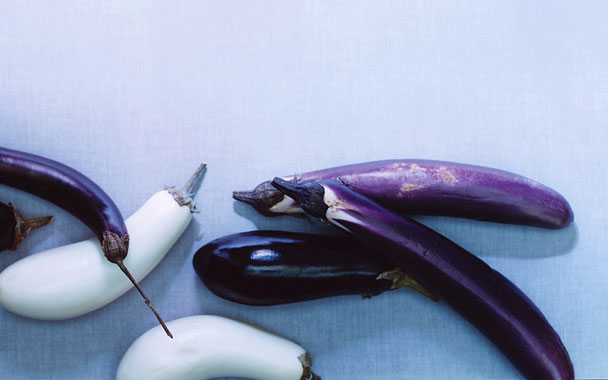It’s that time of year again—the last, sweet days of summer, when eggplant, zucchini, and tomatoes pile up in the farmers markets, and food writers across the land try once more to cajole Americans into eating ratatouille. Alas, it’s not going to work. It never works. This nation suffers from a profound aversion to ratatouille that hasn’t budged since we first encountered the dish more than half a century ago. Unlike quiche, which came over from France around the same time and quickly achieved stardom, ratatouille is still languishing on the edges of the everyday food world. You can’t buy a frozen version, or pick it up readymade from the supermarket deli case; it’s rarely on restaurant menus, and even its occasional moment in the sun as a pizza topping hasn’t inspired any notable surge of popular affection. The question is, why doesn’t it go away? How did ratatouille manage to stake out a permanent place in the nation’s culinary consciousness when almost nobody eats it?
Most of the ingredients in ratatouille are old favorites of the American table—onions, zucchini, tomatoes—but I’m guessing that the deal-breaker is eggplant. Fat, purple and interminable, eggplant is one of the least-loved vegetables in the land. According to the U.S. Department of Agriculture, annual consumption of eggplant is only four-fifths of a pound per person, an amount that just about accounts for eggplant parmigiana and the odd serving of moussaka, plus those fortunate households where home cooking means baba ghanoush and baingan bharta. And notice what happens to the eggplant in such dishes: it’s doused, slathered and all but lost in a welter of lovely sauces and spices. Not so with ratatouille, where eggplant sits straight up in its seat, undisguised and unavoidable. Small wonder that most readers encountering a ratatouille recipe in a food story about seasonal bounty hastily turn to the apple crisp.
True, Hollywood bestowed an unexpected dollop of glory on the dish with Ratatouille, the acclaimed animated film about a rat chef with big culinary dreams. But even Thomas Keller, the consulting chef who created the version that appeared in the movie, kept a firm distance between himself and traditional ratatouille. Instead of mixing the vegetables together, he arranged dainty spirals of eggplant, squash and tomato on a bed of multi-colored peppers and called it “Confit Byaldi.” (Why this sent the cranky Paris restaurant critic back to his childhood in a dazzlingly Proustian moment remains a mystery, unless he was raised in Istanbul).
Ratatouille only managed to get into this country in the first place because it has such a resoundingly French name. Back in the early 1950s, planeloads of American tourists began visiting France and falling in love with the baguettes, the wine, the sidewalk cafes, and the whole general splendor of being French. Food writers promptly sprang to attention, and French cooking became the symbol of life at its most desirable. “Crepe, in French, means pancake, but not quite the kind of pancake most of us are familiar with,” explained a chic magazine called Living for Young Homemakers. “They are definitely richer, more delicate, more sophisticated.”
In this heady atmosphere, quiche took off, coq au vin took off, onion soup took off—but ratatouille just sat there. Recipes abounded, and the dish never fell from favor, but it never really caught on, either. It didn’t go upscale, like salade niçoise, which acquired fingerling potatoes and fresh tuna. Nor did it go downscale, like the doomed croissant, today a bleak emblem of food-court cuisine. Over the years, recipe-writers dreamed up all sorts of new angles—canned tomato sauce instead of tomatoes, frozen squash instead of summer’s fresh varieties, and every novel add-on they could think of including string beans, pumpkin, cumin, pesto, bacon, pimento-stuffed olives, and blankets of grated cheese. None of these innovations had any lasting impact. In fact, ratatouille has bypassed most of the usual milestones in the life of an American recipe. Quick ‘n’ easy versions did not take over the category. There was no ratatouille revival. It never became an icon of comfort food. Ratatouille—humble, graceless ratatouille—has defied culinary history.




 Pinterest
Pinterest


